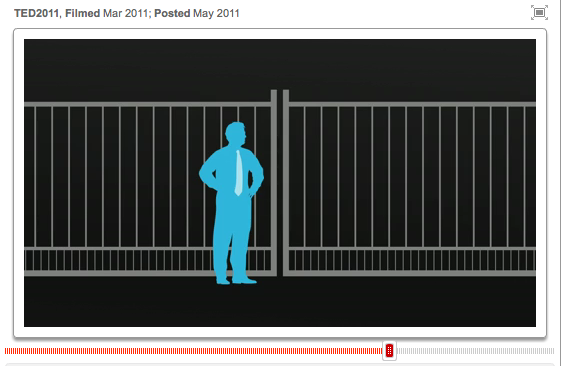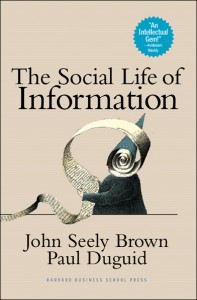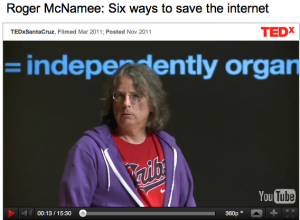Ich möchte hier ein paar Screenshots dieses TED talks zeigen, und ein paar seiner relevantesten Aussagen bezüglich meines Projektes zitieren.
http://www.ted.com/talks/eli_pariser_beware_online_filter_bubbles.html
Zitat Eli Pariser via TED talk:
So it’s not just Google and Facebook either. This is something that’s sweeping the Web.There are a whole host of companies that are doing this kind of personalization. Yahoo News, the biggest news site on the Internet, is now personalized — different people get different things. Huffington Post, the Washington Post, the New York Times — all flirting with personalization in various ways. And this moves us very quickly toward a world in whichthe Internet is showing us what it thinks we want to see, but not necessarily what we need to see. As Eric Schmidt said, “It will be very hard for people to watch or consume somethingthat has not in some sense been tailored for them.”
So I do think this is a problem. And I think, if you take all of these filters together, you take all these algorithms, you get what I call a filter bubble. And your filter bubble is your own personal, unique universe of information that you live in online. And what’s in your filter bubble depends on who you are, and it depends on what you do. But the thing is that you don’t decide what gets in. And more importantly, you don’t actually see what gets edited out.
(…)
That, in fact, you couldn’t have a functioning democracy if citizens didn’t get a good flow of information,
Er sagt, die menschlichen “Gatekeepers” der Informationen hätten sich in “algorythmic gatekeepers” verwandelt.







